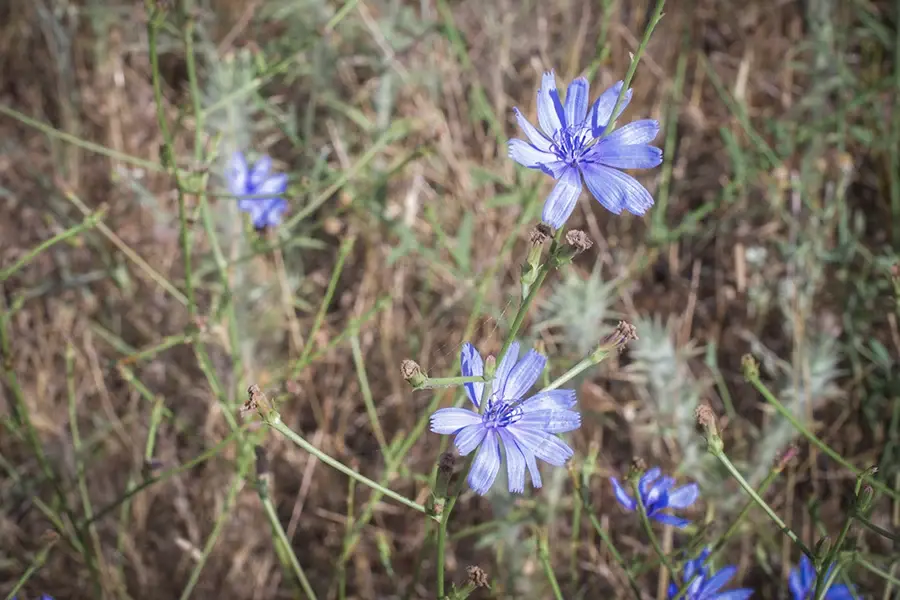Cichorium intybus - Chicory, Blue weed
- Hakan Sener
- Aug 11, 2024
- 2 min read
Updated: Feb 24
Explore Cichorium intybus (Chicory) - its characteristics, habitat, cultivation, propagation, and functional uses and benefits.

Cichorium intybus | Botanical Characteristics
Common Names: Chicory, Blue weed
Family: Asteraceae
Appearance: A perennial herb with bright blue, daisy-like flowers, deeply lobed leaves, and a thick taproot.
Type: Perennial
Evergreen / Deciduous: N/A
Layer: Herb
Root System: Features a deep taproot system
Height: Up to 1.5 meters
Width: Approximately 30 cm
Lifespan: Several years
Growth Rate: Fast
Fertility: Self-fertile
Flowers: Hermaphroditic
Pollinator: Bees and other insects
Toxicity: Not known hazards
Cichorium intybus | Habitat and Cultivation
Range
Native Range: Europe, North Africa, and Western Asia
Companionship: Often found with other herbaceous plants and grasses
Invasive Range: Can be invasive in some regions, particularly in North America
USDA Hardiness Zone: 3 - 9
Minimum Chill Hours Required: None specified
Resistance/Tolerance
Poor Soil: High tolerance
Drought: High tolerance
Shade: Moderate tolerance
Flood: Low tolerance
Wind: High tolerance
Maritime: Moderate tolerance
Air Pollution: High tolerance
Fire: Moderate tolerance
Thriving Conditions
Sun Exposure: Full sun to partial shade
Soil Moisture: Prefers dry to moderately moist conditions
Soil Type: Well-drained, sandy, loamy, or clay soils
Soil PH: Prefers slightly acidic to neutral (6.0 - 7.5)
Propagation
Seeds: Sown directly in the garden; requires light for germination
Cuttings: Not typically used
Cichorium intybus | Functional Uses and Benefits
Edible: Leaves, roots, and flowers are edible; the root is often roasted and used as a coffee substitute
Medicinal: Used in traditional medicine for digestive health and as a liver tonic
Cosmetics: Extracts used in skincare for their anti-inflammatory properties
Animal Feed: The leaves can be used as fodder for livestock
Fiber: Not used for fiber
Timber: Not used for timber
Firewood: Not typically used for firewood
Wind Break: Not typically used as a windbreak
Fence: Not typically used as a barrier plant
Cover Crop: Can be used as a cover crop to improve soil structure
Mulch: Not typically used as mulch
Nitrogen Fixer: No
Dynamic Accumulator: No significant data available
Pollinator Attractor: Yes, attracts bees and other pollinators
Pest Repellent: Not typically known as a pest repellent
Wildlife Supporter: Provides habitat for various insects
Sign up for our newsletter or connect with us on social media to stay up-to-date with our latest posts and permaculture inspiration.
Explore our inspiring series and posts:
Love the post? Share it with your circle, inspire your people: